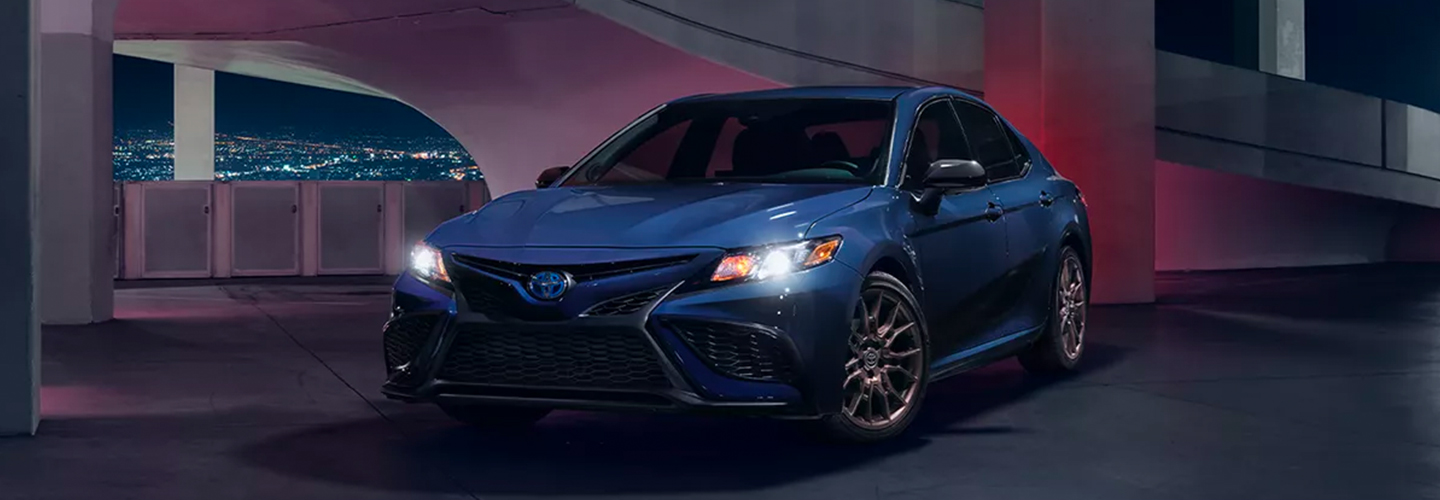When shopping for a used vehicle, the title status serves as one of the most critical indicators of a car’s history and potential future reliability. A clean title suggests the vehicle has never been severely damaged, flooded, or declared a total loss by an insurance company.
However, the relationship between title status and actual vehicle condition becomes particularly complex when examining high-mileage vehicles around the 200,000-mile mark.
Some vehicles are engineered with such robust construction and reliable powertrains that they can accumulate massive mileage while maintaining clean titles and solid mechanical integrity.
These automotive workhorses often represent exceptional value propositions for budget-conscious buyers who prioritize reliability over low mileage.
Conversely, certain vehicles have earned reputations for developing chronic problems that may not immediately appear on title documents but can create ongoing headaches for owners.
The phenomenon of “lemon history” extends beyond official lemon law designations. Many vehicles experience recurring issues that result in multiple warranty claims, frequent repairs, and frustrated owners who eventually trade them in without the problems being reflected in the title.
These hidden issues can include transmission failures, electrical gremlins, premature engine wear, or chronic reliability problems that manifest after warranty periods expire.
Understanding which vehicles tend to maintain clean titles at high mileage versus those that commonly hide problematic histories can save buyers thousands of dollars and countless hours of frustration.
This knowledge becomes especially valuable in today’s used car market, where high mileage doesn’t necessarily indicate poor condition, and low mileage doesn’t guarantee trouble-free ownership.
5 Cars That Have Clean Titles at 200K Miles
These exceptionally reliable vehicles maintain pristine ownership histories throughout their extended lifespans, with documentation that reflects consistent maintenance and trouble-free operation across multiple responsible owners.
Their outstanding build quality and dependable engineering prevent the cascading mechanical failures that typically generate salvage titles, flood damage, or lemon law buybacks during normal service life.
From comprehensive service records to accident-free histories, these remarkable machines demonstrate the longevity and reliability that creates valuable high-mileage examples sought after by informed buyers.
Owners take pride in maintaining these vehicles properly, often passing down detailed maintenance documentation that supports clean title status and premium resale values even at extreme mileages.
1. Toyota Camry (2007-2017 Generation)
The Toyota Camry stands as perhaps the most reliable midsize sedan ever produced, with countless examples surpassing 200,000 miles while maintaining clean titles and excellent mechanical condition.
The seventh and eighth-generation Camrys, spanning model years 2007 through 2017, represent the pinnacle of Toyota’s engineering philosophy that prioritizes longevity over cutting-edge features.
The heart of the Camry’s reliability lies in its powertrains, particularly the naturally aspirated four-cylinder and V6 engines. The 2.5-liter four-cylinder engine, introduced in 2010, features a robust design with timing chains instead of belts, reducing maintenance requirements and potential failure points.
This engine commonly reaches 250,000 to 300,000 miles with proper maintenance, requiring only routine oil changes, air filters, and occasional spark plug replacements. The V6 option, a 3.5-liter unit, offers similar longevity while providing additional power for drivers who need it.
Transmission reliability sets the Camry apart from many competitors. The six-speed automatic transmission used in most models demonstrates exceptional durability, with many units operating smoothly well beyond 200,000 miles.
Unlike some manufacturers who experienced widespread transmission failures during this period, Toyota’s conservative engineering approach resulted in transmissions that rarely require major repairs when serviced according to schedule.
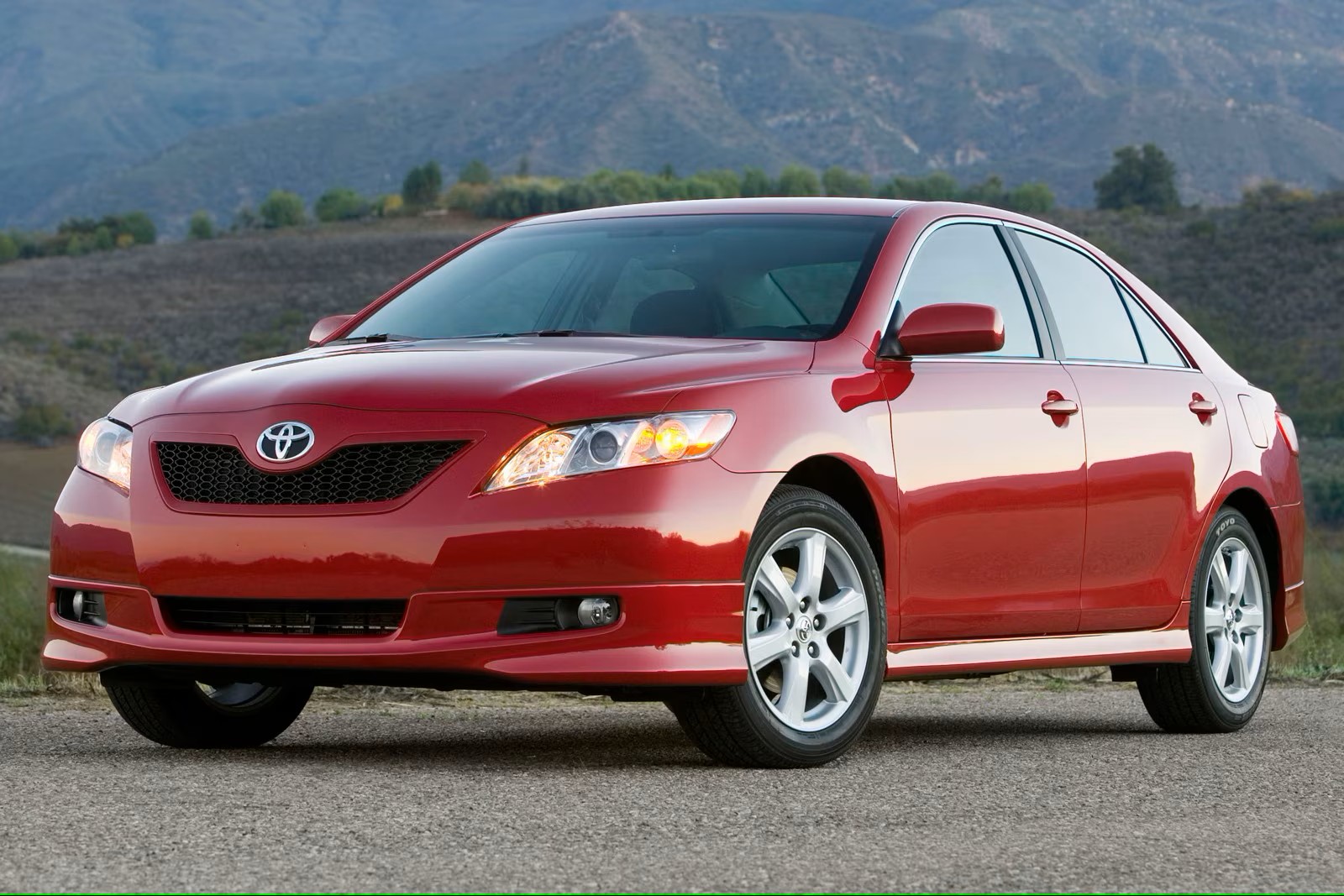
The Camry’s electrical systems also contribute to its clean title longevity. While many vehicles from this era suffer from electrical gremlins that can render them unreliable or unsafe, the Camry’s straightforward electrical architecture minimizes complex failure modes.
Power windows, door locks, lighting systems, and engine management components typically function reliably throughout the vehicle’s extended lifespan.
Suspension and brake components, while requiring periodic replacement like any vehicle, are engineered for longevity and easy serviceability. MacPherson struts, control arm bushings, and brake components wear predictably and can be replaced with readily available, reasonably priced parts.
This serviceability ensures that high-mileage Camrys can maintain their roadworthiness without requiring expensive specialized repairs. The body construction and paint quality of these Camrys also contribute to their clean title status.
Toyota’s rust-proofing processes and paint systems help vehicles maintain structural integrity and acceptable appearance even after years of daily use. While some models may show cosmetic wear, the underlying structure typically remains sound, preventing the type of severe corrosion that can lead to structural damage and title branding.
Most importantly, the Camry’s reputation for reliability means that owners typically maintain these vehicles properly, understanding their long-term value.
Regular maintenance, combined with the vehicle’s inherent durability, creates a positive cycle where high-mileage examples remain in good condition and retain clean titles throughout their extended service lives.
2. Honda Civic (2006-2015 Generation)
The Honda Civic from the eighth and ninth generations represents one of the most reliable compact cars ever produced, with an exceptional ability to accumulate high mileage while maintaining clean titles and dependable operation.
These vehicles demonstrate Honda’s engineering excellence in creating affordable, efficient transportation that can serve families reliably for decades. The powerplant options in these Civics showcase Honda’s renowned engine technology.
The 1.8-liter naturally aspirated four-cylinder engine, designated R18, features Honda’s i-VTEC technology that provides both efficiency and longevity.
This engine regularly achieves 300,000 miles or more with proper maintenance, requiring only routine oil changes, timing belt replacements at specified intervals, and occasional valve adjustments. The engine’s aluminum construction and sophisticated engineering result in minimal internal wear even under demanding conditions.
Honda’s transmission technology during this period sets the Civic apart from many competitors. The five-speed manual transmission offers exceptional durability and engaging operation, while the five-speed automatic provides smooth, reliable shifting throughout its extended lifespan.
Unlike some manufacturers who experienced widespread transmission problems during this era, Honda’s conservative engineering approach resulted in transmissions that rarely require major repairs when properly maintained.
The Civic’s electrical systems demonstrate remarkable reliability and longevity. The engine management system, charging system, and various electrical components typically function properly well beyond 200,000 miles.
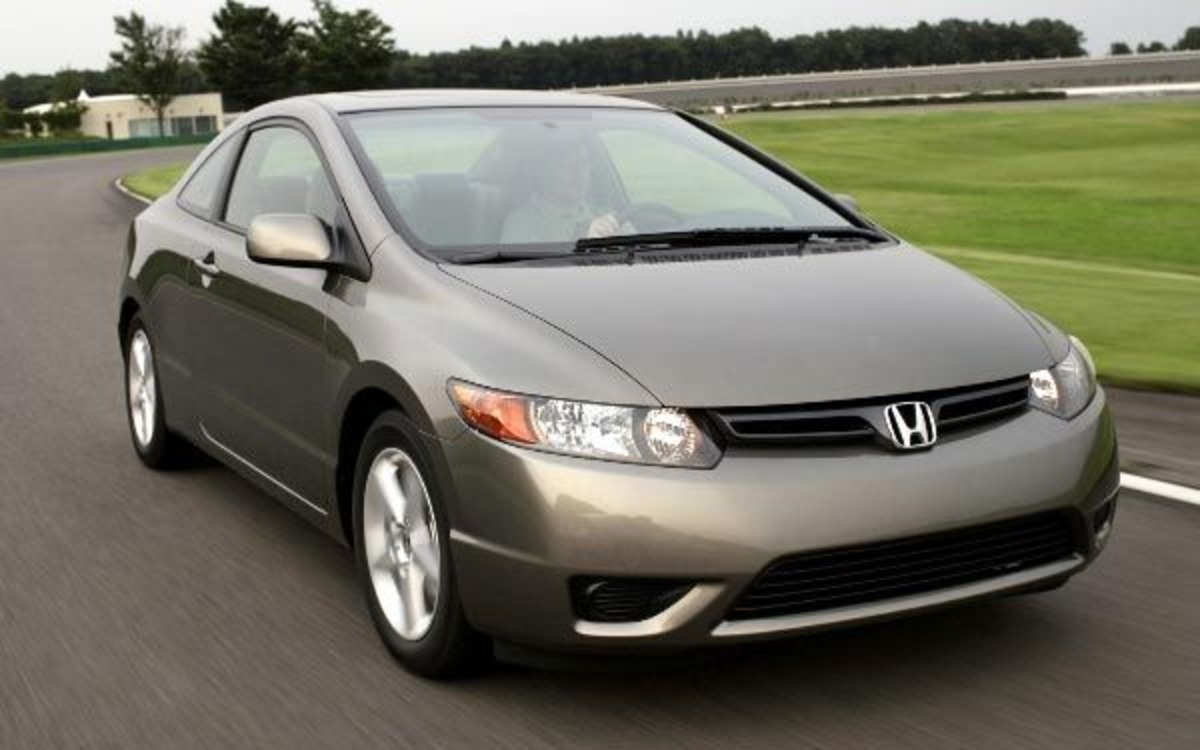
This reliability extends to comfort and convenience features, with power accessories, climate control systems, and instrumentation remaining functional throughout the vehicle’s extended service life.
Fuel efficiency represents another significant advantage of high-mileage Civics. Even with substantial mileage, these vehicles typically maintain their impressive fuel economy, often achieving 35-40 miles per gallon in combined driving.
This efficiency, combined with the vehicle’s reliability, makes high-mileage Civics particularly attractive to budget-conscious buyers who need dependable, economical transportation.
The Civic’s suspension system, while relatively simple, proves remarkably durable. MacPherson struts, stabilizer bars, and suspension bushings wear predictably and can be replaced with affordable parts.
The brake system similarly demonstrates longevity, with brake pads, rotors, and calipers providing reliable stopping power throughout the vehicle’s extended lifespan.
Body integrity and corrosion resistance contribute significantly to the Civic’s clean title longevity. Honda’s manufacturing processes and materials choices result in vehicles that resist rust and maintain structural soundness even in harsh climates.
While some cosmetic wear may occur over time, the underlying structure typically remains intact, preventing the type of damage that could affect title status.
The Civic’s reputation for reliability encourages proper maintenance among owners who understand the vehicle’s potential for long-term service. This maintenance culture, combined with the availability of affordable parts and widespread service knowledge, ensures that high-mileage Civics can continue operating reliably while maintaining their clean title status.
3. Subaru Outback (2010-2014 Generation)
The fourth-generation Subaru Outback represents a unique achievement in automotive engineering, combining all-wheel-drive capability with exceptional reliability and the ability to maintain clean titles well beyond 200,000 miles.
This generation addressed many of the head gasket issues that plagued earlier Subaru models while retaining the brand’s renowned durability and versatility.
The heart of the Outback’s reliability lies in its refined boxer engine technology. The 2.5-liter naturally aspirated four-cylinder engine, designated FB25, features improved head gasket designs and materials that virtually eliminated the chronic failures experienced in earlier generations.
This engine demonstrates remarkable longevity, regularly achieving 250,000 to 300,000 miles with proper maintenance. The horizontal opposed design provides inherent balance and smooth operation while contributing to the vehicle’s low center of gravity and handling characteristics.
Subaru’s Symmetrical All-Wheel Drive system sets the Outback apart from most vehicles in terms of capability and longevity. Unlike many all-wheel-drive systems that add complexity and potential failure points, Subaru’s system operates continuously and demonstrates exceptional durability.
The system’s mechanical simplicity, combined with robust construction, ensures reliable operation throughout the vehicle’s extended lifespan while providing superior traction in adverse conditions.
The Continuously Variable Transmission (CVT) used in many Outback models initially raised reliability concerns, but the units in this generation have proven surprisingly durable.
With proper fluid changes and reasonable driving habits, these transmissions typically provide reliable service well beyond 200,000 miles. The CVT’s ability to keep the engine in its optimal power band contributes to both fuel efficiency and reduced engine wear.

Electrical systems in the Outback demonstrate remarkable reliability and functionality. The all-wheel-drive control systems, engine management, and various electronic components typically function properly throughout the vehicle’s extended service life.
This reliability extends to comfort and convenience features, with climate control, power accessories, and infotainment systems remaining operational well into high-mileage service.
The Outback’s suspension system combines capability with durability. The independent suspension design provides excellent ride quality and handling while demonstrating longevity that matches the rest of the vehicle.
Struts, springs, and suspension components wear predictably and can be replaced with readily available parts, ensuring that high-mileage Outbacks maintain their roadworthiness and driving dynamics.
Body construction and corrosion resistance represent significant strengths of the Outback. Subaru’s manufacturing processes and galvanized steel construction help vehicles resist rust and maintain structural integrity even in harsh climates with road salt exposure.
The robust construction prevents the type of structural damage that could affect title status while maintaining the vehicle’s utility and safety characteristics.
Ground clearance and robust underbody protection contribute to the Outback’s clean title longevity by preventing damage from road hazards, debris, and off-road use.
The vehicle’s design anticipates rough use and protects critical components, reducing the likelihood of damage that could affect the vehicle’s title status or operational capability.
The Outback’s reputation among outdoor enthusiasts and practical buyers creates a maintenance culture where owners understand the vehicle’s capabilities and maintain them properly for long-term reliability.
This care, combined with the vehicle’s inherent durability, ensures that high-mileage examples typically retain their clean titles and reliable operation.
4. Lexus ES 350 (2007-2018 Generation)
The Lexus ES 350 represents the pinnacle of luxury sedan reliability, demonstrating an exceptional ability to maintain clean titles and pristine operation well beyond 200,000 miles.
Built on Toyota’s proven Camry platform but elevated with luxury appointments and meticulous quality control, the ES 350 combines comfort, refinement, and legendary Toyota reliability in a package that consistently delivers trouble-free ownership.
The powertrain foundation of the ES 350’s reliability centers on Toyota’s acclaimed 3.5-liter V6 engine, designated 2GR-FE. This naturally aspirated engine represents one of the most reliable V6 powerplants ever produced, regularly achieving 300,000 miles or more with routine maintenance.
The engine features aluminum construction, variable valve timing, and sophisticated engineering that minimizes wear while maximizing performance and efficiency. Internal components demonstrate exceptional longevity, with many engines showing minimal wear even after extensive high-mileage service.
The six-speed automatic transmission paired with the V6 engine showcases Toyota’s transmission engineering excellence. This unit provides smooth, refined shifting throughout its extended service life while demonstrating remarkable durability.
The transmission’s adaptive learning capabilities and robust construction ensure reliable operation well beyond 200,000 miles, typically requiring only routine fluid changes and occasional solenoid maintenance to maintain optimal performance. Lexus quality control and assembly standards significantly contribute to the ES 350’s longevity and clean title retention.
The manufacturing process emphasizes precision assembly, quality materials, and thorough testing that results in vehicles with fewer defects and longer component life. This attention to detail extends to every system in the vehicle, from major mechanical components to minor trim pieces and electrical connections.
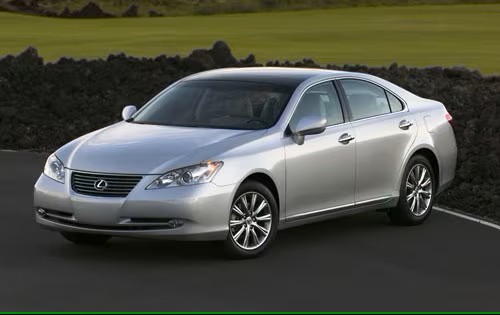
The electrical and electronic systems in the ES 350 demonstrate exceptional reliability and sophistication. Advanced features like adaptive cruise control, navigation systems, premium audio, and climate control typically function properly throughout the vehicle’s extended lifespan.
The integration of these systems reflects Lexus’ engineering philosophy that prioritizes long-term reliability over cutting-edge technology that might prove problematic.
Suspension and chassis components showcase the luxury focus of the ES 350 while maintaining the durability expected from Toyota engineering. The independent suspension system provides exceptional ride quality and handling while demonstrating longevity that matches other vehicle systems.
Components wear predictably and can be maintained with high-quality replacement parts that preserve the vehicle’s refinement and driving characteristics.
Interior materials and construction quality significantly exceed typical standards, contributing to the vehicle’s ability to maintain value and appeal even at high mileage.
Leather upholstery, wood trim, and various interior components demonstrate exceptional durability and aging characteristics that allow high-mileage vehicles to retain their luxury appeal and functionality.
The ES 350’s reputation among luxury buyers creates an ownership culture that emphasizes proper maintenance and care. Owners typically follow recommended service schedules, use quality fluids and parts, and address minor issues before they become major problems.
This maintenance culture, combined with the vehicle’s inherent reliability, ensures that high-mileage examples continue to operate like new while retaining their clean titles.
Sound insulation and refinement characteristics remain intact even at high mileage, with the vehicle continuing to provide the quiet, smooth operation expected from a luxury sedan.
This sustained refinement contributes to owner satisfaction and proper maintenance, creating a positive cycle that supports long-term reliability and clean title retention.
Also Read: 5 TPMS Setups That Don’t Fail And 5 That Always Need Resets
5. Ford F-150 (2009-2014 Generation)
The twelfth-generation Ford F-150 represents a remarkable achievement in pickup truck engineering, combining robust construction with refined powertrains that enable many examples to surpass 200,000 miles while maintaining clean titles and reliable operation.
This generation addressed many durability concerns from earlier models while introducing advanced features that enhanced both capability and longevity.
The engine lineup in this F-150 generation showcases Ford’s engineering evolution toward reliability and efficiency. The 5.0-liter Coyote V8, introduced in 2011, features advanced design elements including four-valve heads, variable cam timing, and robust internal components that regularly achieve 250,000 to 300,000 miles with proper maintenance.
This naturally aspirated engine provides strong performance while avoiding the complexity and potential issues associated with forced induction systems.
The 3.7-liter V6 engine option demonstrates similar reliability characteristics while providing adequate power for most truck duties. This naturally aspirated engine features modern design elements and conservative tuning that prioritize longevity over peak performance.
Regular maintenance, including oil changes, air filter replacement, and cooling system service, typically ensures reliable operation throughout the vehicle’s extended service life.
Transmission reliability represents a significant strength of this F-150 generation. The six-speed automatic transmission demonstrates exceptional durability under heavy use conditions, typically providing reliable service well beyond 200,000 miles.
The transmission’s robust construction and conservative programming help ensure smooth shifting and reliable operation even when regularly towing or hauling heavy loads.
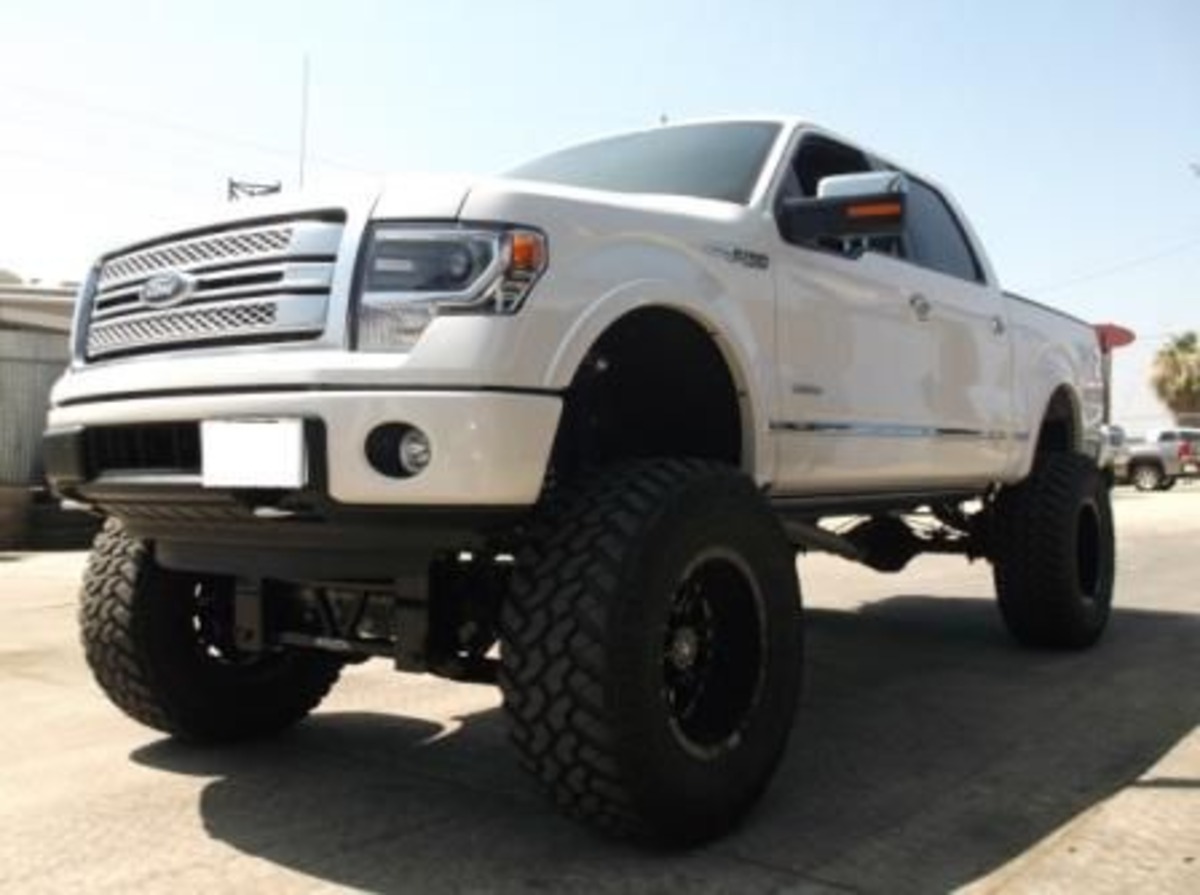
The F-150’s body-on-frame construction contributes significantly to its ability to maintain clean titles at high mileage. The separate frame and body design provides exceptional durability and allows for easy repair of minor damage without affecting the vehicle’s structural integrity.
This construction method prevents the type of damage that might affect title status while enabling the truck to handle demanding use conditions.
Electrical systems in this F-150 generation demonstrate improved reliability compared to earlier models. The engine management system, charging system, and various electrical components typically function properly throughout extended service.
Advanced features like trailer brake controllers, power accessories, and climate control systems generally maintain their functionality well beyond 200,000 miles.
The suspension system combines capability with durability, featuring robust components designed for heavy-duty use. Front independent suspension and rear leaf springs provide excellent ride quality and load-carrying capability while demonstrating longevity that matches the rest of the vehicle.
Suspension components wear predictably and can be replaced with readily available parts. Cooling system robustness contributes to engine longevity and clean title retention.
The large radiator, robust water pump, and well-designed cooling passages help prevent overheating even under demanding conditions. This cooling capacity, combined with proper maintenance, helps ensure that high-mileage F-150s avoid the engine damage that could affect title status.
The F-150’s reputation among commercial users and serious truck buyers creates a maintenance culture that emphasizes proper care and regular service.
Fleet operators and contractors understand the importance of maintenance in maximizing vehicle life, leading to many high-mileage examples that receive excellent care throughout their service lives. Serviceability and parts availability represent significant advantages for high-mileage F-150 ownership.
The truck’s popularity ensures widespread service knowledge and readily available parts, making it economical to maintain these vehicles properly throughout their extended service lives while preserving their clean title status and reliable operation.
5 Cars That Hide Lemon History
These problematic vehicles often carry concealed backgrounds of manufacturer buybacks, flood damage, or extensive warranty repairs that careful title searches and vehicle history reports can reveal to unsuspecting buyers.
Their troubled pasts frequently involve multiple major component failures during early ownership periods, creating patterns of expensive repairs that manufacturers sometimes resolve through buyback programs or title washing.
What appears to be a clean, well-maintained vehicle may represent a previously rejected unit with hidden damage, altered odometers, or reconstructed titles that surfaces only through thorough investigation.
Buyers who skip comprehensive pre-purchase inspections and detailed history checks often discover too late that their “bargain” vehicle carries expensive baggage from its troubled manufacturing or accident history.
1. BMW 3 Series (2006-2013 Generation E90/E92/E93)
The fifth-generation BMW 3 Series, encompassing the E90 sedan, E92 coupe, and E93 convertible models, represents one of the most problematic luxury vehicles of its era, with many examples developing chronic issues that rarely appear on title documents but create ongoing ownership nightmares.
While these vehicles offer exceptional driving dynamics and luxury appointments when functioning properly, their complex systems and questionable reliability create hidden problems that can devastate unsuspecting buyers.
The engine lineup in these 3 Series models showcases BMW’s ambitious but flawed engineering during this period. The naturally aspirated inline-six engines, while smooth and powerful, suffer from numerous chronic issues, including failing high-pressure fuel pumps, problematic valve cover gaskets, and expensive cooling system failures.
The turbocharged four-cylinder and six-cylinder engines introduce additional complexity with turbocharger failures, carbon buildup issues, and timing chain problems that can result in catastrophic engine damage.
Perhaps most notorious are the N54 and N55 turbocharged engines, which, despite their impressive performance capabilities, suffer from widespread reliability issues.
High-pressure fuel pump failures can leave drivers stranded without warning, while turbocharger failures require expensive repairs that often exceed the vehicle’s value.
Carbon buildup on intake valves, a consequence of direct injection technology, requires costly walnut blasting services every 30,000 to 50,000 miles to maintain proper engine operation.
The automatic transmission systems in these vehicles demonstrate concerning reliability patterns. The six-speed automatic transmissions often develop harsh shifting, slipping, and complete failure modes that require expensive rebuilds or replacements.
The mechatronic units that control these transmissions are particularly problematic, with failures that can cost $3,000 to $5,000 to repair. Manual transmissions, while generally more reliable, still suffer from clutch and flywheel issues that create expensive maintenance requirements.
Electrical systems represent perhaps the most frustrating aspect of ownership for these BMW models. The complex network of control modules, sensors, and electronic components creates numerous failure modes that can be difficult and expensive to diagnose and repair.
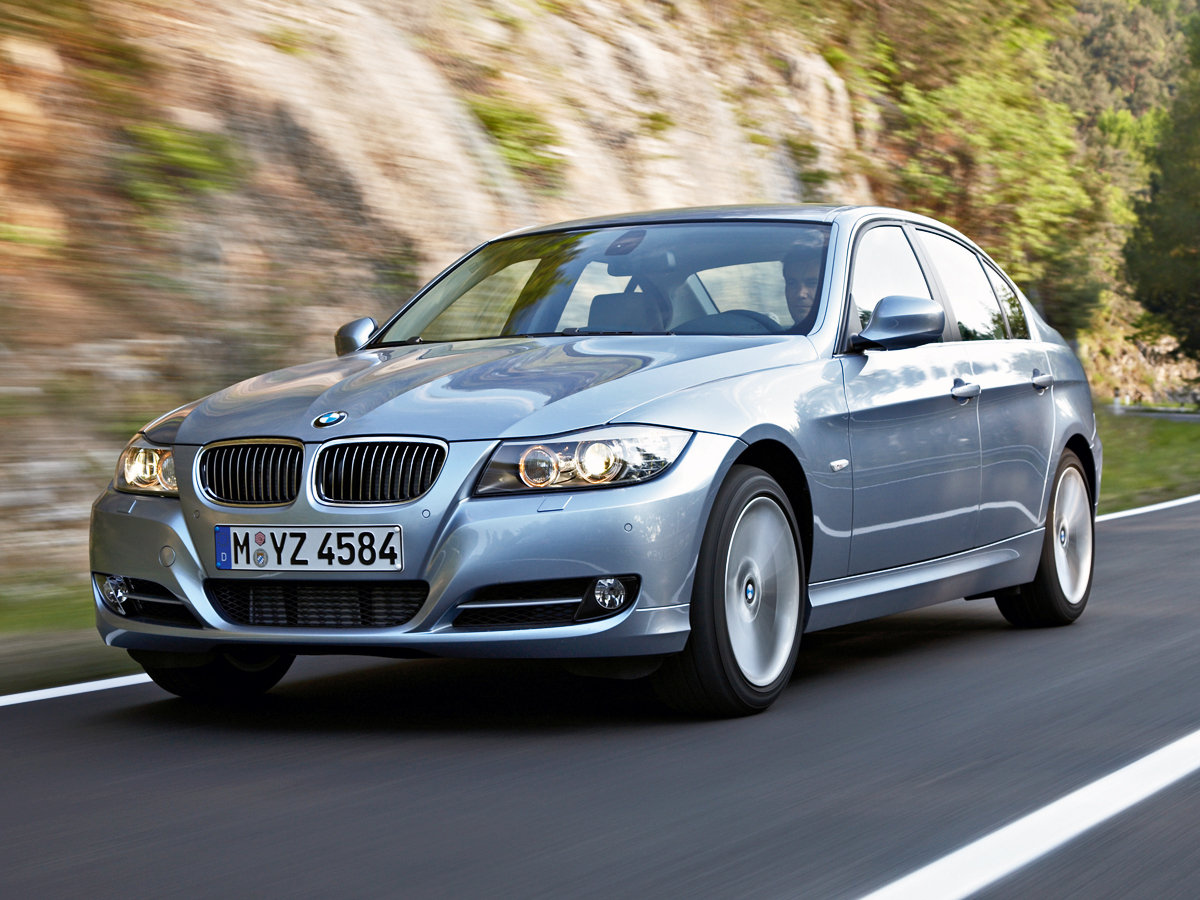
Window regulators fail regularly, requiring expensive replacements. The iDrive infotainment system often develops glitches and failures that affect multiple vehicle functions. Climate control systems suffer from electronic failures that can be prohibitively expensive to repair.
The sophisticated suspension systems, while providing excellent handling characteristics, introduce complexity and expense that can be overwhelming for high-mileage ownership.
Electronic damper controls fail regularly, requiring expensive replacements. Suspension bushings and mounts wear prematurely, leading to handling deterioration and expensive repair bills.
The run-flat tires, while eliminating the need for a spare tire, wear quickly and cost significantly more to replace than conventional tires. Cooling system reliability represents a chronic weakness in these vehicles.
Plastic cooling system components, including radiator end tanks, expansion tanks, and various hoses, fail regularly and often simultaneously. Water pump failures are common and can result in engine overheating and damage if not addressed immediately. The electronic cooling fans and their control modules also demonstrate high failure rates.
The vehicle’s numerous electronic systems create ongoing diagnostic and repair challenges that can be financially devastating. Sensor failures throughout the vehicle trigger warning lights and reduced performance modes that require expensive diagnostic procedures and part replacements.
The integration of these systems means that the failure of one component can affect multiple vehicle functions, creating cascading problems that can be difficult to resolve.
Perhaps most concerning is the tendency for these problems to develop after warranty expiration, when owners become responsible for the full cost of repairs.
Many vehicles appear to function normally during their initial years of ownership, only to develop multiple chronic issues as they age. The complexity of these systems means that even experienced technicians may struggle with diagnosis and repair, leading to multiple repair attempts and escalating costs.
The cumulative effect of these issues creates a pattern where many BMW 3 Series vehicles from this generation become financial burdens for their owners, leading to early disposal or trade-in situations where the full extent of the problems may not be disclosed to subsequent buyers.
2. Range Rover Evoque (2012-2019 First Generation)
The first-generation Range Rover Evoque represents one of the most problematic luxury SUVs ever produced, combining striking design with catastrophically poor reliability that creates ongoing nightmares for owners while rarely appearing on vehicle titles.
Despite its initial popularity and award-winning design, the Evoque’s numerous chronic issues make it a vehicle that consistently hides serious problems beneath its attractive exterior.
The powertrain systems in the Evoque demonstrate systematic reliability problems that can be financially devastating for owners. The turbocharged four-cylinder engines suffer from numerous issues, including timing chain failures, turbocharger problems, and cooling system defects that can result in catastrophic engine damage.
The 2.0-liter turbocharged engine, in particular, experiences premature timing chain stretch that can cause complete engine failure, often occurring just outside of warranty coverage.
Perhaps most notorious is the nine-speed automatic transmission, which suffers from widespread reliability issues that affect virtually every aspect of vehicle operation.
These transmissions develop harsh shifting, complete loss of drive, and electronic control failures that require expensive repairs or complete replacement. The transmission control modules fail regularly, creating situations where the vehicle may not shift properly or may lose all forward gears without warning.
The Evoque’s sophisticated all-wheel-drive system introduces complexity that creates numerous failure modes and expensive repair requirements.
The rear differential and transfer case components fail regularly, often requiring complete replacement that can cost $8,000 to $12,000. The electronic control systems that manage torque distribution suffer from sensor failures and software glitches that can leave the vehicle in permanent two-wheel-drive mode or cause dangerous handling characteristics.
Electrical systems throughout the Evoque demonstrate systematic reliability problems that can be frustrating and expensive to resolve. The infotainment system regularly develops glitches, freezing, and complete failures that affect climate control, navigation, and vehicle settings.
Door handle mechanisms, which feature electronic operation, fail regularly and can trap occupants inside the vehicle or prevent entry. Window regulators and their associated electronic controls demonstrate high failure rates.
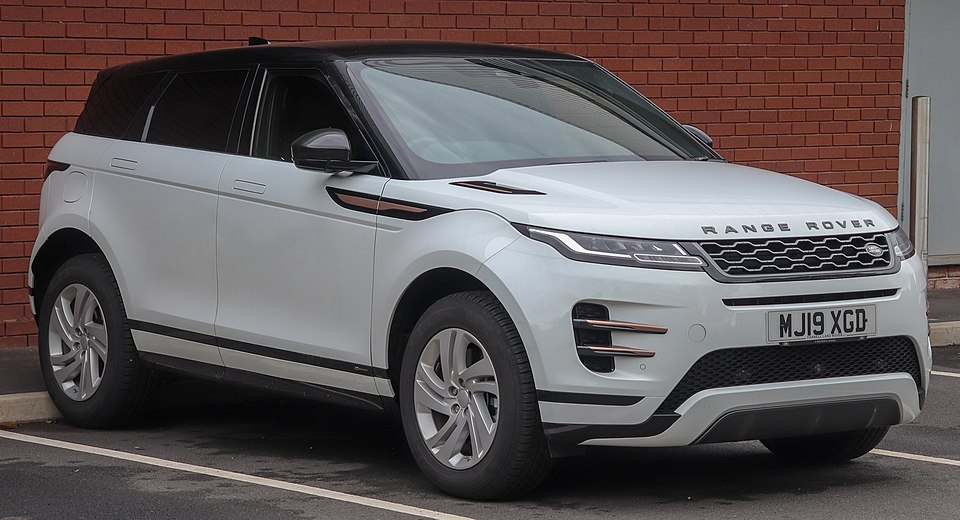
The vehicle’s air suspension system, standard on many models, represents a particularly expensive reliability problem. Air spring failures are common and expensive to replace, while the electronic control systems and air compressors also demonstrate high failure rates.
When these systems fail, the vehicle may be unable to maintain proper ride height, affecting handling and potentially causing dangerous driving conditions.
Cooling system problems plague the Evoque throughout its service life. The complex cooling system, designed to manage both engine temperature and turbocharger cooling, suffers from numerous component failures including water pump problems, radiator failures, and thermostat issues.
These failures can result in engine overheating and catastrophic damage, often occurring without adequate warning to the driver. The panoramic sunroof, a popular option on many Evoke models, demonstrates chronic reliability problems, including water leaks, mechanical failures, and electronic control issues.
When these systems fail, water can enter the vehicle’s interior, potentially causing electrical damage and mold problems that can be expensive to remediate and may affect the vehicle’s safety and habitability.
Interior electronic systems suffer from numerous reliability issues that affect both comfort and functionality. Climate control systems develop electronic failures that can leave occupants without heating or cooling.
Seat adjustment mechanisms fail regularly, particularly in vehicles equipped with power-adjustable seats. The vehicle’s numerous electronic convenience features demonstrate high failure rates that can be expensive to repair.
Quality control issues affect numerous aspects of the vehicle, from paint defects and panel fit problems to interior trim failures and premature wear of various components.
These issues, while not necessarily affecting basic vehicle operation, contribute to the overall ownership experience and can significantly impact the vehicle’s resale value and long-term viability.
The cumulative effect of these problems creates a situation where Evoque ownership becomes increasingly expensive as the vehicle ages, with many owners facing repair bills that exceed the vehicle’s value while being unable to sell the vehicle due to its poor reputation and known reliability issues.
3. Chrysler 200 (2011-2017, Both Generations)
The Chrysler 200, spanning two generations from 2011 to 2017, represents one of the most problematic midsize sedans ever produced, with both generations suffering from systematic reliability issues that create ongoing problems for owners while rarely appearing on vehicle titles.
Despite Chrysler’s marketing efforts and redesign attempts, both generations of the 200 demonstrate chronic problems that make them vehicles to avoid in the used car market.
The first-generation 200 (2011-2014), essentially a rebadged Sebring, inherited numerous problems from its predecessor while introducing new issues.
The available engines, including a 2.4-liter four-cylinder and 3.6-liter V6, suffer from various reliability problems including premature timing chain wear, oil consumption issues, and cooling system failures.
The four-cylinder engine, in particular, develops a chronic oil burning problem that can lead to engine damage if not constantly monitored and addressed.
The second-generation 200 (2015-2017) introduced new powertrains that, despite being more modern, brought their own set of reliability problems.
The 2.4-liter Tigershark engine suffers from oil consumption issues, timing chain problems, and premature wear of internal components. The available V6 engine, while more refined than its predecessor, still demonstrates reliability concerns including cooling system problems and premature component wear.
Perhaps most problematic across both generations are the transmission systems, which demonstrate widespread reliability issues that can leave drivers stranded and create expensive repair bills.
The four-speed automatic transmission in first-generation models suffers from harsh shifting, slipping, and complete failure modes. The nine-speed automatic transmission introduced in the second generation, while more advanced, proves even more problematic with widespread reports of harsh shifting, hesitation, and complete loss of drive.
The nine-speed transmission deserves particular attention as one of the most problematic automotive transmissions ever produced. These units suffer from software calibration issues, mechanical failures, and electronic control problems that affect virtually every aspect of vehicle operation.
Drivers report instances of the transmission refusing to shift, jerking violently during gear changes, and completely losing all forward gears without warning. Warranty repairs often fail to resolve these issues permanently.
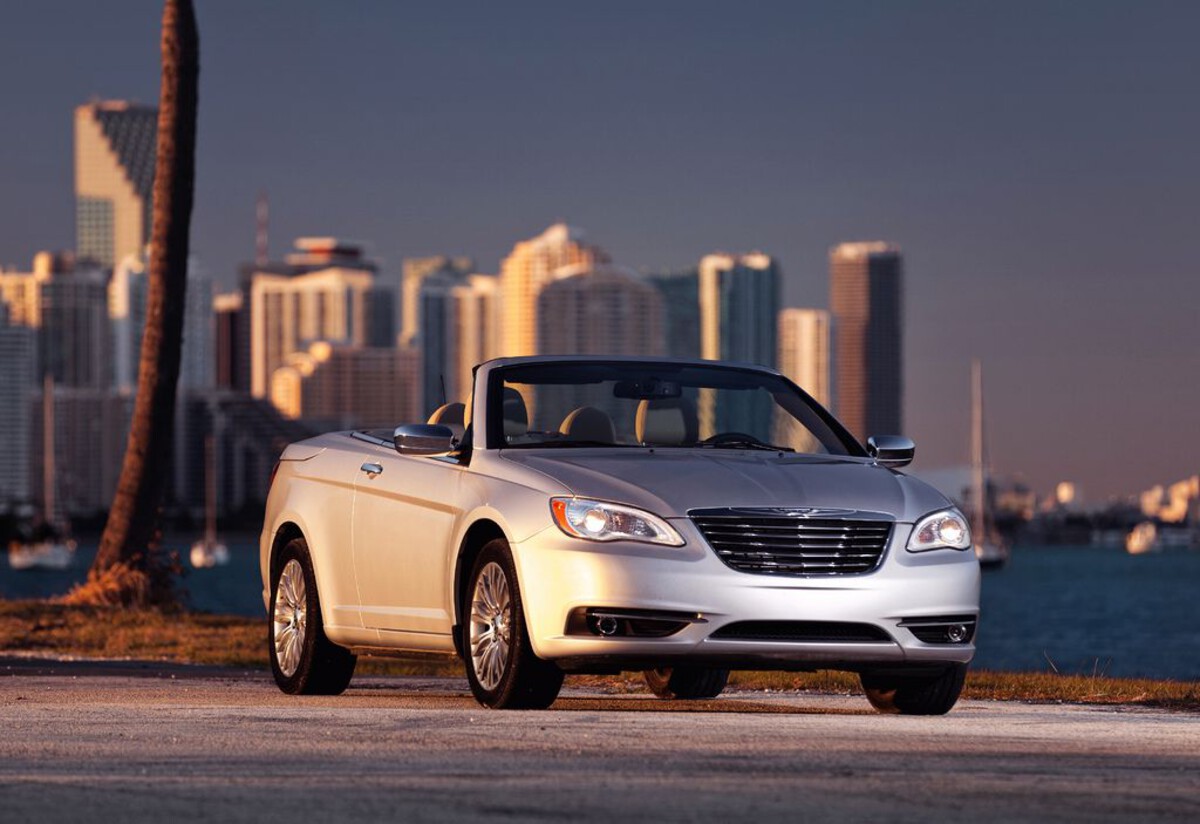
Electrical systems throughout both generations of the 200 demonstrate systematic reliability problems. The vehicle’s numerous electronic systems, including engine management, transmission control, and body control modules, suffer from high failure rates.
These failures can affect multiple vehicle systems simultaneously, creating diagnostic challenges and expensive repair bills. The integration of these systems means that failure of one component can trigger problems throughout the vehicle.
The air conditioning and climate control systems in both generations suffer from chronic reliability problems. Compressor failures are common and expensive to repair, while electronic climate control systems develop glitches and failures that can leave occupants without proper heating or cooling.
The complexity of these systems makes diagnosis and repair expensive and often unsuccessful in providing permanent solutions. Suspension and steering components demonstrate premature wear and failure rates that exceed industry norms.
Strut assemblies, steering racks, and various suspension bushings wear quickly and require frequent replacement. The electronic power steering systems in later models suffer from assistance failures that can make the vehicle difficult or dangerous to control.
Quality control issues affect numerous aspects of both 200 generations, from paint defects and premature rust to interior trim failures and premature wear of various components. These issues contribute to the overall ownership experience and can significantly impact the vehicle’s resale value and long-term viability.
The vehicle’s infotainment and electronic convenience systems demonstrate high failure rates and poor long-term reliability. Touch screen interfaces develop glitches and failures, while various electronic features stop functioning properly as the vehicle ages.
These failures, while not necessarily affecting basic vehicle operation, contribute to owner frustration and expensive repair bills. Perhaps most concerning is the pattern of these problems developing relatively early in the vehicle’s life, often just outside of warranty coverage when owners become responsible for the full cost of repairs.
The complexity of the vehicle’s systems and the interconnected nature of its electronic components make diagnosis and repair challenging and expensive, often resulting in multiple repair attempts that fail to permanently resolve the underlying issues.
The cumulative effect of these problems has led to the 200’s early discontinuation and poor reputation in the used car market, where even low-mileage examples may hide serious reliability issues that can create ongoing problems for unsuspecting buyers.
4. Volkswagen Passat (2012-2019 NMS Generation)
The North American-specific Volkswagen Passat, produced from 2012 to 2019 and known internally as the NMS (New Midsize Sedan), represents a significant departure from Volkswagen’s traditional engineering philosophy while introducing numerous reliability issues that create ongoing problems for owners.
Despite its spacious interior, refined ride quality, and attractive pricing when new, the Passat NMS demonstrates systematic reliability problems that make it a problematic choice in the used car market.
The engine lineup in the Passat NMS showcases several powertrains with documented reliability issues. The base 2.5-liter five-cylinder engine, while relatively simple in design, suffers from premature carbon buildup, timing chain stretch, and cooling system problems.
The 1.8-liter turbocharged four-cylinder engine, introduced later in the production run, demonstrates the typical Volkswagen turbocharger reliability issues, including premature turbocharger failure, carbon buildup problems, and complex emissions system failures.
The 2.0-liter TDI diesel engine, available until the diesel emissions scandal, suffers from numerous issues beyond the well-publicized emissions problems. These engines experience fuel injector failures, exhaust gas recirculation problems, and diesel particulate filter issues that create expensive maintenance requirements and potential for catastrophic failures.
The emissions system modifications required as part of the diesel settlement often introduce additional reliability concerns. Transmission systems across the Passat NMS lineup demonstrate concerning reliability patterns.
The six-speed automatic transmission suffers from harsh shifting, premature wear of internal components, and electronic control issues. The DSG dual-clutch automatic transmission, available on some models, requires expensive regular maintenance and suffers from clutch pack failures that can result in complete transmission replacement.
Manual transmissions, while generally more reliable, still experience clutch and flywheel issues. The vehicle’s electrical systems represent a significant source of ongoing problems and owner frustration.
Volkswagen’s complex electrical architecture, featuring numerous control modules and interconnected systems, creates multiple failure modes that can be expensive to diagnose and repair. The MIB infotainment system suffers from software glitches, hardware failures, and integration problems that affect multiple vehicle functions.
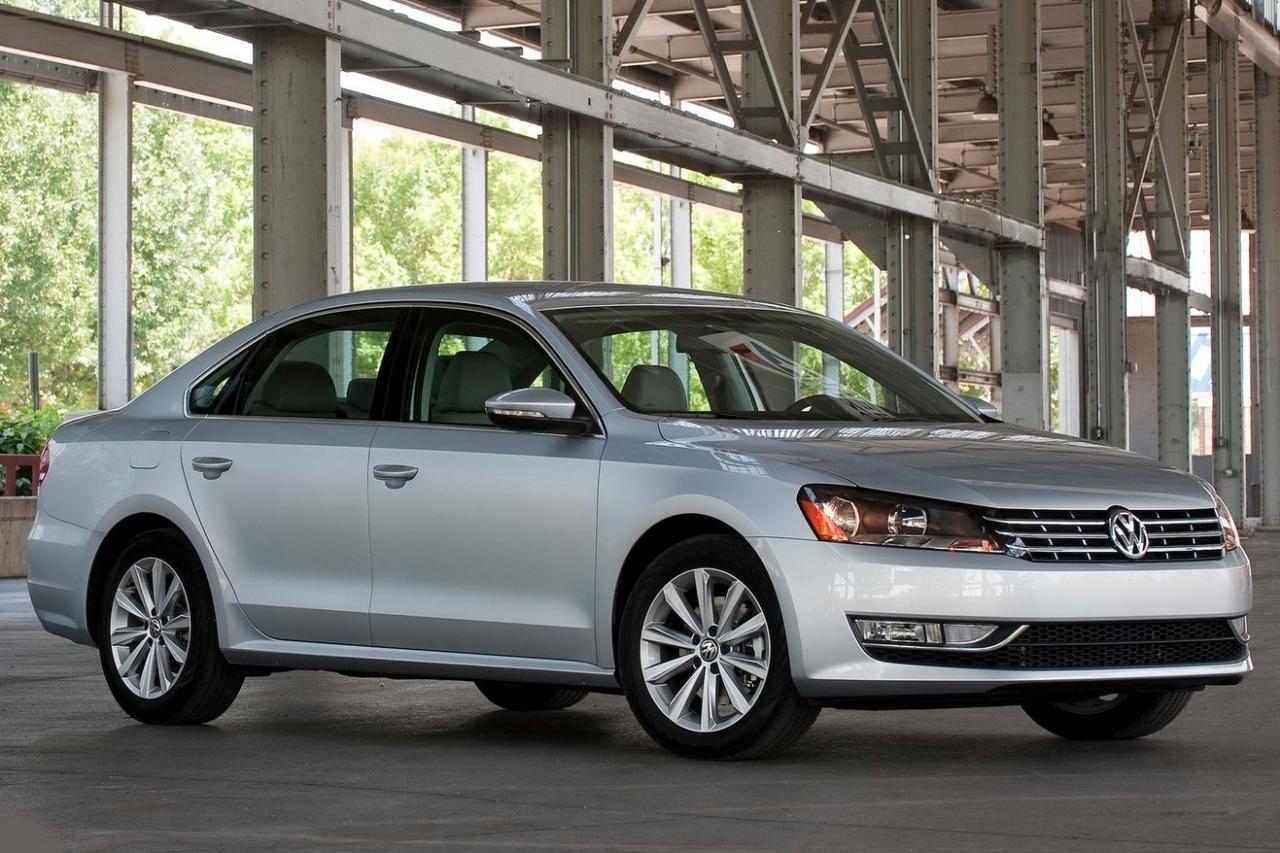
Climate control systems in the Passat demonstrate systematic reliability issues including air conditioning compressor failures, electronic control problems, and premature wear of various components.
The automatic climate control system’s numerous sensors and actuators fail regularly, creating situations where occupants may be unable to achieve comfortable cabin temperatures. These repairs often require expensive dealer diagnosis and proprietary parts.
The vehicle’s sophisticated safety and driver assistance systems, while advanced for their time, introduce complexity that creates ongoing reliability concerns.
Parking sensors fail regularly, backup cameras develop image quality problems, and various electronic safety systems suffer from sensor failures and calibration issues. These problems not only create expensive repair bills but may also compromise the vehicle’s safety capabilities.
Suspension components in the Passat demonstrate premature wear patterns that exceed typical industry standards. Strut assemblies, control arm bushings, and various suspension mounts wear quickly and require frequent replacement.
The electronic damper control systems, available on some models, add complexity and potential failure points that can be expensive to repair. Cooling system reliability represents a chronic weakness throughout the Passat NMS production run.
Plastic cooling system components, including thermostat housings, expansion tanks, and various hoses, fail regularly and often simultaneously. Water pump failures are common and can result in engine overheating if not addressed immediately. The cooling fans and their electronic control systems also demonstrate high failure rates.
The vehicle’s direct injection fuel system, while providing improved performance and efficiency, creates ongoing maintenance requirements and potential problems. Carbon buildup on intake valves requires periodic cleaning services that can cost $500 to $800 every 30,000 to 40,000 miles.
Fuel injector failures are also common and expensive to repair, often requiring the replacement of multiple injectors simultaneously. Quality control issues affect numerous aspects of the Passat, from paint defects and premature rust to interior trim failures and premature wear of various components.
These issues, while not necessarily affecting basic vehicle operation, contribute to the overall ownership experience and can significantly impact the vehicle’s resale value.
Perhaps most frustrating for owners is the pattern of these problems developing just outside of warranty coverage, when repair costs become the owner’s responsibility.
The complexity of the vehicle’s systems and the need for specialized diagnostic equipment often mean that only Volkswagen dealers can properly service these vehicles, leading to expensive repair bills and limited repair options.
5. Cadillac CTS (2008-2014 Second Generation)
The second-generation Cadillac CTS represents General Motors’ ambitious attempt to compete with European luxury sedans, but despite its impressive performance credentials and attractive styling, the CTS demonstrates numerous reliability issues that create ongoing problems for owners while rarely appearing on vehicle titles.
The vehicle’s complex systems and questionable component quality make it a problematic choice in the used luxury car market. The engine lineup in the second-generation CTS showcases several powertrains with documented reliability concerns.
The base 3.0-liter V6 engine suffers from timing chain issues, premature carbon buildup, and cooling system problems that can result in expensive repairs.
The 3.6-liter V6 engine, while more powerful, demonstrates additional complexity with variable valve timing problems, high-pressure fuel pump failures, and premature wear of internal components.
The high-performance CTS-V model, equipped with a supercharged 6.2-liter V8 engine, introduces additional reliability concerns despite its impressive performance capabilities.
The supercharger system requires expensive maintenance and suffers from heat exchanger failures, while the engine’s high-performance nature creates accelerated wear of various components.
The cooling system, stressed by the high-performance engine, suffers from premature component failures that can be expensive to address. Transmission systems across the CTS lineup demonstrate concerning reliability patterns that can create expensive repair scenarios.
The six-speed automatic transmission suffers from harsh shifting, slipping, and complete failure modes that often require expensive rebuilds or replacements.
The manual transmission, available on CTS-V models, while generally more reliable, still experiences clutch and flywheel issues that create expensive maintenance requirements.
The vehicle’s electrical systems represent a significant source of ongoing problems and owner frustration. The CTS features numerous electronic systems and control modules that suffer from high failure rates and expensive repair costs.
The CUE infotainment system, introduced in later model years, demonstrates particularly problematic reliability with touchscreen failures, software glitches, and complete system failures that can affect multiple vehicle functions.

Climate control systems in the CTS suffer from chronic reliability issues, including air conditioning compressor failures, electronic control problems, and premature failure of various actuators and sensors.
The automatic climate control system’s complexity creates multiple failure modes that can be expensive to diagnose and repair. When these systems fail, occupants may be left without proper heating or cooling, particularly problematic in a luxury vehicle where comfort is a primary expectation.
The vehicle’s sophisticated suspension systems, while providing excellent handling characteristics, introduce complexity and expense that can be overwhelming for ownership beyond warranty coverage.
The Magnetic Ride Control system, available on many models, suffers from damper failures that require expensive replacements with proprietary components.
Standard suspension systems also demonstrate premature wear of bushings, mounts, and other components that create expensive maintenance requirements.
Electrical power steering systems in the CTS demonstrate reliability concerns, including complete loss of power assistance, erratic operation, and expensive control module failures.
These problems can create dangerous driving situations and require expensive repairs that often exceed the vehicle’s depreciated value. The integration of the power steering system with other vehicle electronics means that failures can affect multiple systems simultaneously.
The vehicle’s numerous electronic convenience and luxury features create ongoing reliability challenges as the vehicle ages. Power seat adjustments fail regularly, particularly the complex memory seat systems.
Window regulators demonstrate high failure rates, while door lock actuators and various electronic switches suffer from premature failures that can be expensive to repair and may affect vehicle security.
Cooling system reliability represents a chronic weakness throughout the CTS production run. The vehicle’s performance-oriented engines generate significant heat, stressing cooling system components that often fail prematurely.
Water pump failures are common and can result in engine overheating and damage. Radiators, expansion tanks, and various hoses demonstrate shorter service lives than typical industry standards.
The CTS’s direct injection fuel systems, while providing improved performance and efficiency, create ongoing maintenance requirements and potential reliability issues. Carbon buildup on intake valves requires periodic cleaning services that can cost several hundred dollars.
High-pressure fuel pump failures are also documented, creating situations where the vehicle may lose power or fail to start without warning. Body and interior quality control issues affect the long-term ownership experience of the CTS. Paint defects, premature wear of interior trim pieces, and various quality issues contribute to the vehicle’s declining appearance and functionality as it ages.
These problems, while not necessarily affecting mechanical operation, significantly impact the luxury ownership experience and resale value.
The integration of the vehicle’s numerous electronic systems means that failure of one component can trigger cascading problems throughout the vehicle, creating diagnostic challenges and expensive repair scenarios that may require multiple visits to resolve.
This complexity, combined with the vehicle’s declining reliability as it ages, makes the second-generation CTS a vehicle that often hides significant potential problems beneath its attractive exterior and impressive performance capabilities.

